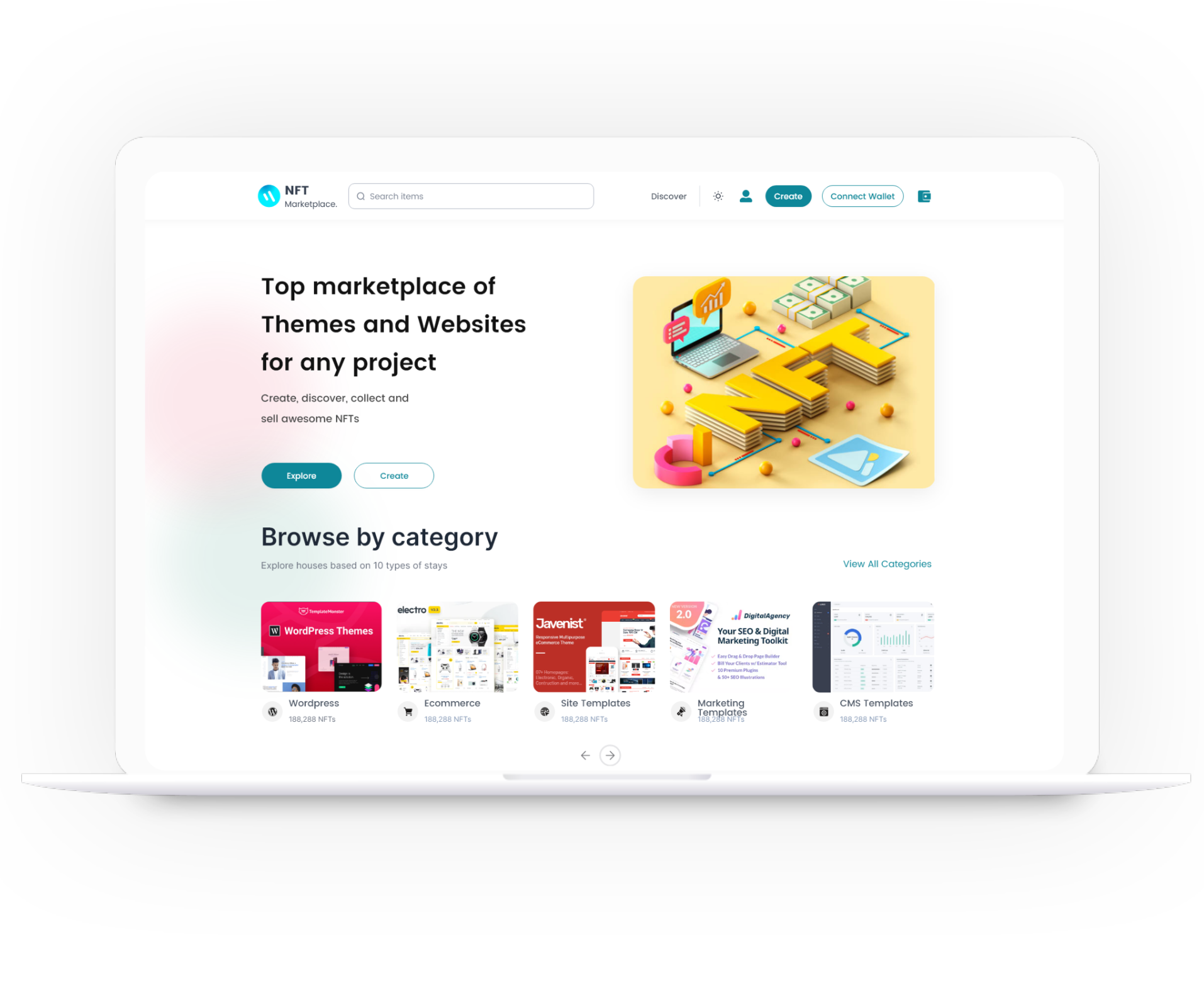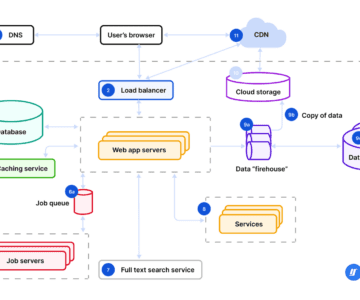Business enterprises worldwide are focusing on building the apps to reach their target audiences more easily, solve customer problems quickly, and confidently work together toward shared success.
However, the competition is fierce nowadays. According to Statista, as of August 2024, Android users could choose between 2.3 million apps, making Google Play the app store with the biggest number of available apps. Apple's App Store is the second-largest app store for iOS, with almost 1.64 million available apps.
iOS Mobile App Architecture
The standard iOS mobile app architecture can be divided into four blocks:
- Kernel level (Core OS) — works with the file system, and controls the validity of various certificates belonging to the applications. Also responsible for the security of the entire system. Contains low-level access to the elements of the device.
- Core Services (Core Service) — provides access to databases and file controls.
- Media level (Media) — contains tools that allow for processing most media data formats.
- Interface level (Cocoa Touch) — has many elements for creating mobile interfaces, and also provides the remaining layers with information coming from the user.
An MVC (Massive View Controller) and its prototypes are used to create a high-quality iOS mobile application architecture. Cocoa MVC encourages you to write a Massive View Controller because the controller is so involved in the View life cycle that it is difficult to say that it is a separate entity.
Architecture for Mobile Application & Tips for Making It
A well-designed architecture is needed for all applications, both complex and simple. Using architecture for mobile applications saves time, effort, and costs. A program with a reliable architecture is easier to tweak, test, and debug.
- Efficiency: the application performs the tasks and performs the functions in any condition. The system is effective, reliable, and copes with all the loads.
- Flexibility: the chosen solution is easy to change, and errors are few. You can change one element, and it will not be fatal, influencing the other one in a negative way.
- Extensibility: you can add as many functions as you like to the application.
- Scalability: time for development and updates decreases. The solid architecture allows you to direct development in several parallel threads.
- Testability: The architecture for mobile applications is easily tested, which means that the number of errors decreases and its reliability increases.
- Understandability: the code should be understandable to as many developers as possible. A lot of people are working on the application. Good architecture allows beginners to understand the project quickly.
Elements to Consider Before Developing Your Mobile App Architecture
For a solid background for a mobile app, some things should be considered first and foremost. Precisely, building a mobile app requires your foresight in four key dimensions:
- Choosing the mobile app dimensions that fit your preferred devices
- Prescribing scenarios for a different quality of Internet connection
- Polishing UI details for your target audience
- Picking the proper navigation between the elements on a screen
Determining the Device Types
The parameters of smartphones determine the specifics of your mobile app. Think in advance of how it will run on each screen (meaning its size and DPI), how the app will be compatible with the processor (CPU), and how much memory it needs. The proper attention to these hardware and software details will make your mobile solution more stable and reliable.
Also, make sure your app will work great not only on a smartphone and tablet but also on different smartphone models.
Considering Bandwidth Scenarios
Another thing to consider is the compatibility of your mobile app with different types of Internet connections. Many developers don't acknowledge this nuance while working on mobile app architecture. Be more prepared and get ready for the worst scenario.
This problem is worth your attention while meeting your remote target audience. All over the world, the availability of the Internet network will differ. Some countries already have 5G, while others still survive on 3G. Moreover, the speed and battery usage characteristics matter here. Thus, ensure your mobile solution has everything needed to guarantee a comfortable experience for your users anywhere.
Defining User Interface
An awesome UI is always a must for a mobile app. Built on the basic presentation layer, it becomes the point of interaction with users. The key to success is to give them a solution that is both simple and creative. Besides, your mobile app architecture design choice should always meet the demands of your target audience.
Picking the Right Navigation Method
Finally, proper navigation is about finding a fair compromise between user expectations and app restrictions. It's the result of exquisite artistry in linking the frontend and backend in one solution.
Among the possible options, pay your attention to these top 5 methods that users like:
- Stacked navigation bar — you design a fixed bar and put there links to all other elements within your mobile app
- Tab controller — a container that allows switching between the groups of tabs with links
- Modal controller — the screen menu that allows switching between tabs and links
- Single view — a screen with one element and an option to go back
- Gesture-based navigation — the intuitive tool that encourages to use finger combinations or efficiently interact with the Home button to cause an action on the screen
To pick the best navigation method, learn your customers! Some styles are intuitive for them, while others make them confused or bored.
How to Choose the Right Architecture for Your Mobile App?
When it comes to the specifics of building an app, everything starts from these fundamental layers:
- Data layer — the data-related platform within a mobile app
- Business logic layer — the place for all the domain processes and operations
- Presentation layer — all the technical details connected with the user interface
This multitier architecture dictates the rule for software development: your team should build each dimension separately and make them work together smoothly. At the same time, this initial complication ensures addressing complex issues fast and without changing the entire app.
Let's see how each of these layers works.
Data Layer
This layer is all about the safety of data maintenance — including access, utilities, and service tools. It's the background from which you can further develop business logic and presentation peculiarities. The patterns you choose for the core operations determine the way your app will work.
Make sure the design you've built here is flexible enough to meet the changes in your business needs or your customers' expectations.
Business Logic Layer
This platform hides all the management work done to create a mobile app: you will have separate tasks for logging, caching, validating, and other technical operations. Also, this is the place for complex business procedures and corporate policies. In other words, here you have an application facade with underlying workflow, components, and entities.
In short, the business logic layer is the place for everything connected with logic and business.
Presentation Layer
The important step here is to define the customer profile so that the images on the screen and the arrangement of elements satisfy your users. Now, your customer is always right — even in the decision on the data format. This layer is not about the exact choice of your data, though — it's about designing the format that prevents invalid data input.
By considering these specifics, how to choose the right architecture? The answer is simple: start with the end. Meet your customers.
Final Tips for Your Mobile Architecture
The creation of mobile architecture is a sequential plan that must be completed before the development process begins. This plan provides a map of how the various components of the application should be organized and connected to each other. It presents guidelines that should be followed during the development process and some sacrifices (usually associated with a large number of classes and templates) that will ultimately help you create a well-written application that will be easier to test, expand, and maintain.
We, at Intellectsoft, empower companies and their workforce with cutting-edge transformative solutions and data-driven insights. Our team has more than 17 years of experience in mobile app development and other software development services.
Also, don't hesitate to take a look at the full list of client cases to see how we solved business challenges through effective digitalization.
Are you and your organization ready to shift the mindsets and get the most out of innovations? Talk to our experts in enterprise app development and find out more about the topic and how your business or project can start benefiting from it today!
FAQ
What is the architecture of mobile apps?
The architecture of mobile apps is a mere set of certain rules and techniques that are implemented while developing a mobile app. By following these patterns, developers can build a well-structured and feature-rich application that corresponds to all the industry standards and is less prone to bugs and failure. The success of the project depends on the quality of the mobile app architecture.
Why is this so important for businesses?
The proper mobile application architecture can not only help make a decent application but also save a lot of time and money for a business too. In addition, the mobile architecture makes app testing and maintenance easier too.
What mobile app architecture should you choose when designing a top-notch application?
There are different types of mobile app architecture such as cross-platform, hybrid, and enterprise mobile app architecture, as well as architecture for iOS and Android. In order to choose the matching one, it's crucial to understand your mobile app development goals. Clearly define what kind of app you want to build and then picking the right mobile application architecture will be easy.






















